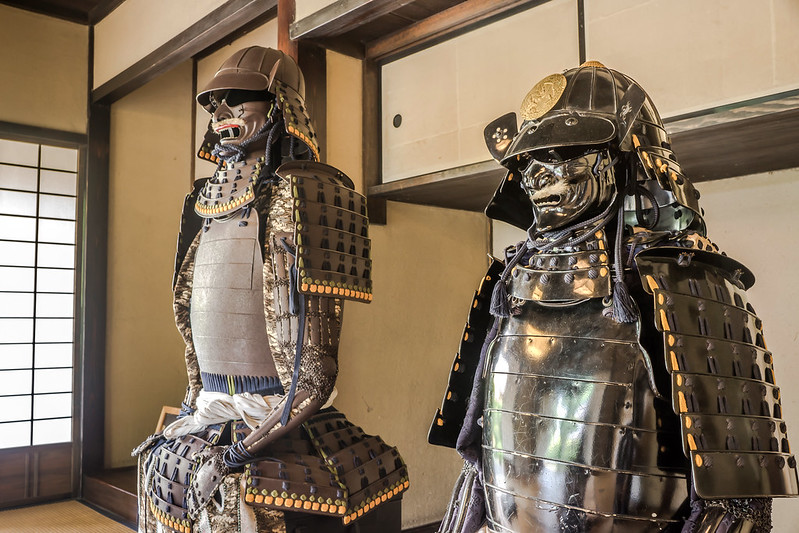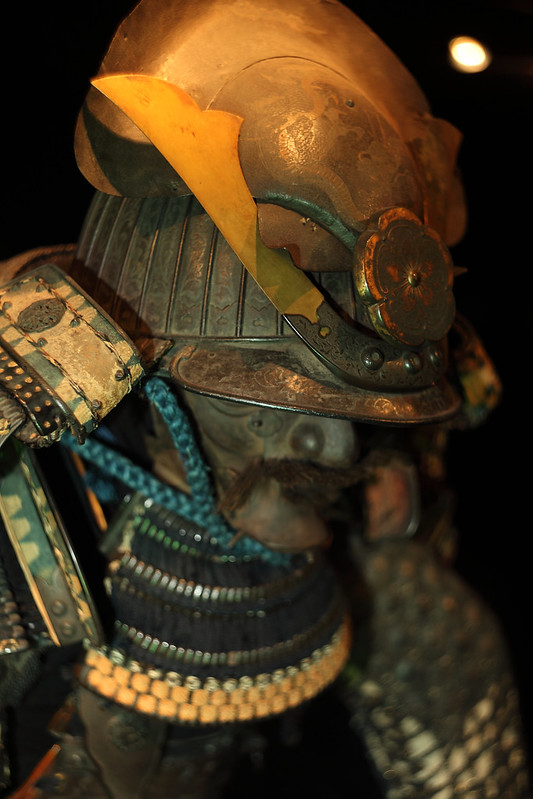
The Samurai Facial Armor and Helmet
When we imagine knights in tales and legends, we always picture them in shining armor. The samurai is the Japanese version of a knight. Samurai (侍) or bushi (武士) were Japanese military nobility during medieval and early modern Japan. They were known for their strict adherence to Bushidō (武士道), “the way of the warrior”. They represented honor, valor, and loyalty. The samurai comprised less than 10% of the Japanese population, but their teachings are still observed in the everyday Japanese life and in modern Japanese martial arts.
 The samurai have their own version of protective wear such as the ō-yoroi (大鎧), which means “great armor”. Perhaps the most prominent in the whole ensemble of the Japanese armor is the mempo or mengu (facial armor) and the kabuto (helmet).
The samurai have their own version of protective wear such as the ō-yoroi (大鎧), which means “great armor”. Perhaps the most prominent in the whole ensemble of the Japanese armor is the mempo or mengu (facial armor) and the kabuto (helmet).
Mempo is facial armor that covers the whole face or part of it. The facial armor can be made from iron, leather, or a combination of both. Its finish can either be lacquered or rusted, and the designs have an array of facial expressions such as grinning teeth and thick moustaches.
Oda Nobunaga’s kabuto and mempo mask.
The designs of the mask are meant to make the wearer appear scarier in battle. Most mempo, except for the happuri, have a small hole beneath the chin for sweat to pass through.
Kabuto (兜, 冑) is the helmet used by the samurai. Its existence can be traced all the way back to the fifth century in ancient excavated tombs, long before the rise of the samurai class. Called mabizashi-tsuke kabuto, the helmet with an attached visor and a prominent central ridge is said to have originated from China and Korea. The kabuto is an important part of the samurai armor ensemble and kabuto o nugu (“to take off the kabuto”) means to surrender.
Types of mempo designs:
Happuri – covers the forehead and cheeks.
Hanbō – covers the lower face, from below the nose all the way to the chin.
Somen – covers the entire face.
Menpō – covers the face from nose to chin.
Suji bachi kabuto
Some examples of kabuto:
Kaji kabuto – specifically worn by samurai firemen.
Zunari kabuto – made with only three plates.
Suji bachi kabuto –composed of multiple plates and a raised ridge or ribs that indicate where the plates of the helmet come together. The rivets can either be flat or prominent.
Hari bachi kabuto –made with multiple plates without any ridges or ribs.
Samurai helmet and mask. | Ivan Fourie

